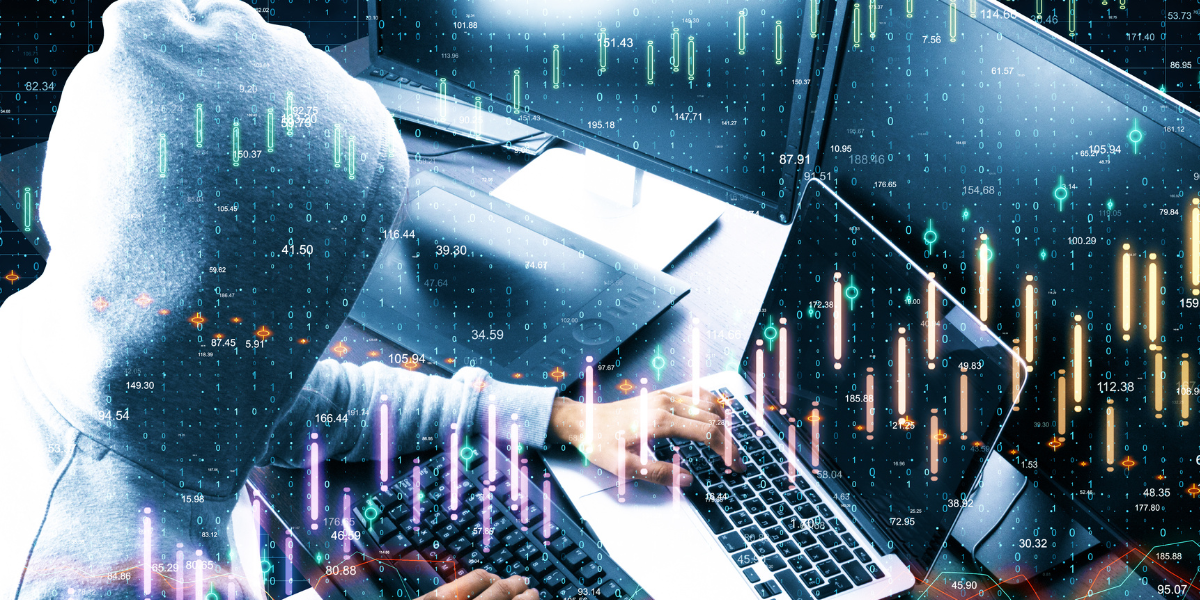US Energy Sector Faces Growing Cybersecurity Threats: Strengthening Cybersecurity in Energy Manufacturing
Understanding the Complexities of Cybersecurity in the Energy Sector
The U.S. energy sector stands at a critical juncture, facing an ever-evolving landscape of cybersecurity threats that pose significant risks to our nation’s power infrastructure. As the backbone of our modern society, the energy sector’s vulnerability to cyber attacks has far-reaching implications for national security, economic stability, and public safety. The complexities of securing this vast and interconnected network of power generation, transmission, and distribution systems present unique challenges that demand innovative solutions and unwavering vigilance.
In recent years, the importance of cybersecurity in energy manufacturing has come to the forefront of industry discussions. The intricate web of suppliers, contractors, and third-party vendors that make up the energy supply chain introduces additional vulnerabilities that cybercriminals are eager to exploit. As Jason Vanzin, CISSP and CEO of Right Hand Technology Group, aptly notes, “The energy sector’s cybersecurity is only as strong as its weakest link, and often that weak link lies within the supply chain.”
This blog post aims to shed light on the critical cybersecurity challenges facing the U.S. energy sector and provide actionable insights for strengthening defenses against cyber threats. By examining vulnerabilities, exploring real-world incidents, and discussing effective mitigation strategies, we hope to equip energy manufacturers and stakeholders with the knowledge needed to enhance their cybersecurity posture and safeguard our nation’s energy infrastructure.
1. Vulnerabilities in the Energy Sector’s Attack Surface
1.1 Energy Transmission and Distribution Networks
The vast and interconnected nature of energy transmission and distribution networks presents a significant challenge in terms of cybersecurity. These networks, which span thousands of miles and connect numerous power generation facilities to end-users, offer multiple entry points for potential cyber attacks.
Key vulnerabilities in transmission networks include:
- Legacy systems with outdated security measures
- Interconnected SCADA (Supervisory Control and Data Acquisition) systems
- Remote access points for maintenance and operations
- Inadequate segmentation between IT and OT (Operational Technology) networks
The potential risks posed by cyber threats to power generation and distribution are severe and wide-ranging. A successful attack could result in:
- Widespread power outages affecting millions of consumers
- Damage to critical infrastructure and equipment
- Economic losses due to disrupted business operations
- Compromised safety systems leading to potential physical harm
Energy supply chain vulnerabilities further compound these risks. The complex network of suppliers, contractors, and third-party vendors involved in energy manufacturing and distribution creates additional attack vectors for cybercriminals to exploit.
Jason Vanzin emphasizes the gravity of this issue, stating, “The interconnected nature of the energy supply chain means that a breach at any point can have cascading effects throughout the entire system. It’s crucial for energy manufacturers to understand and address these vulnerabilities proactively.”
To illustrate the real-world impact of these vulnerabilities, we need only look at recent cyber incidents in the energy sector:
- In 2015, a cyber attack on Ukraine’s power grid left over 225,000 customers without electricity for several hours.
- The 2021 Colonial Pipeline ransomware attack disrupted fuel supplies across the southeastern United States, highlighting the far-reaching consequences of cyber breaches in critical infrastructure.
These incidents underscore the urgent need for robust cybersecurity measures in energy manufacturing and throughout the energy supply chain.
2. Third-Party Risks and Breaches
2.1 Impact of Third-Party Vendors on Cybersecurity
The energy sector’s reliance on third-party vendors for various services and technologies introduces significant cybersecurity risks. According to recent studies, up to 60% of data breaches can be attributed to third-party vulnerabilities. This statistic highlights the critical importance of managing third-party risks effectively in the energy sector.
IT and software vendor risks in the energy sector include:
- Unauthorized access to sensitive systems through vendor credentials
- Introduction of malware or backdoors through compromised software updates
- Data breaches resulting from inadequate security practices by vendors
- Supply chain attacks targeting specific components or technologies
The importance of managing third-party risks cannot be overstated. Energy manufacturers must implement comprehensive strategies for monitoring and vetting third-party vendors to mitigate these risks effectively. Some key approaches include:
- Conducting thorough security assessments of all vendors before onboarding
- Implementing strict access controls and monitoring for third-party connections
- Requiring vendors to adhere to specific security standards and best practices
- Regularly auditing vendor compliance with security policies
- Establishing incident response plans that include third-party breach scenarios
Jason Vanzin offers valuable insight on this topic: “Energy manufacturers need to view their vendors as an extension of their own network. Implementing a robust third-party risk management program is essential for maintaining a strong security posture in today’s interconnected energy landscape.”
By prioritizing third-party risk management, energy manufacturers can significantly reduce their exposure to cyber threats and strengthen the overall security of the energy supply chain.
3. Cybercrime Sophistication in the Energy Sector
3.1 Rising Threats from Cybercriminals
The energy sector faces an increasingly sophisticated landscape of cyber threats, with cybercriminals employing advanced techniques to exploit vulnerabilities and gain unauthorized access to critical systems. Some of the most concerning advanced cyber techniques used in the energy sector include:
- Advanced Persistent Threats (APTs) designed for long-term network infiltration
- AI-powered attacks that can adapt to defensive measures in real-time
- Supply chain attacks targeting specific components or software
- Social engineering tactics exploiting human vulnerabilities
- Zero-day exploits targeting previously unknown vulnerabilities
To illustrate the real-world impact of these sophisticated threats, let’s examine the Colonial Pipeline breach of 2021:
Case Study: Colonial Pipeline Breach
In May 2021, Colonial Pipeline, which operates the largest fuel pipeline in the United States, fell victim to a ransomware attack. The consequences were severe:
- The company was forced to shut down its entire pipeline network for several days
- Fuel shortages and panic buying occurred across the southeastern United States
- The company paid a $4.4 million ransom to regain control of its systems
- The incident highlighted the vulnerability of critical infrastructure to cyber attacks
This case study underscores the urgent need for managing cybercrime threats effectively in the energy sector. To combat these evolving threats, energy manufacturers should consider the following recommendations:
- Implement advanced threat detection and response systems
- Conduct regular penetration testing and vulnerability assessments
- Invest in employee cybersecurity training and awareness programs
- Develop and maintain comprehensive incident response plans
- Collaborate with industry peers and government agencies to share threat intelligence
Jason Vanzin emphasizes the importance of staying ahead of cybercriminals: “The sophistication of cyber threats in the energy sector is growing exponentially. Energy manufacturers must adopt a proactive, intelligence-driven approach to cybersecurity to anticipate and mitigate emerging threats effectively.”
By understanding and addressing the growing sophistication of cyber threats, energy manufacturers can better protect their operations and contribute to the overall resilience of the U.S. energy infrastructure.
4. Effective Mitigation Strategies for Energy Manufacturing
4.1 Implementing Robust Security Measures
To effectively combat the growing cybersecurity threats in the energy sector, manufacturers must implement comprehensive and robust security measures. These strategies should encompass both technical controls and organizational practices to create a multi-layered defense against cyber attacks.
Network Segmentation and Firewall Controls
Network segmentation is a critical component of a strong cybersecurity posture in energy manufacturing. By dividing the network into smaller, isolated segments, manufacturers can limit the potential spread of a breach and protect critical systems from unauthorized access. Key aspects of effective network segmentation include:
- Separating IT and OT networks
- Implementing strict access controls between segments
- Regularly reviewing and updating segmentation policies
Firewall controls play a crucial role in enforcing network segmentation and preventing unauthorized access. Modern Next-Generation Firewalls (NGFWs) offer advanced features such as:
- Deep packet inspection
- Intrusion prevention systems (IPS)
- Application-level filtering
- Threat intelligence integration
Employee Training and Awareness
While technical measures are essential, the human element remains a critical factor in cybersecurity. Comprehensive employee training strategies should focus on:
- Recognizing and reporting phishing attempts
- Proper handling of sensitive data
- Understanding and adhering to security policies
- Awareness of social engineering tactics
- Incident response procedures
Jason Vanzin highlights the importance of employee training: “In the energy sector, every employee must be a frontline defender against cyber threats. Ongoing education and awareness programs are not just beneficial – they’re absolutely essential for maintaining a robust security posture.”
Implementing Comprehensive Security Measures
A holistic approach to security in energy manufacturing should include:
- Regular security assessments and penetration testing
- Continuous monitoring and logging of network activities
- Robust patch management and software update processes
- Encryption of sensitive data both at rest and in transit
- Implementation of multi-factor authentication (MFA) across all systems
- Development and regular testing of incident response plans
Real-world examples of successful security implementations in the energy sector include:
- The implementation of AI-powered threat detection systems by major utility companies
- Adoption of blockchain technology for secure energy trading and grid management
- Deployment of industrial control system (ICS) security solutions to protect critical infrastructure
By implementing these comprehensive security measures, energy manufacturers can significantly enhance their resilience against cyber threats and protect critical infrastructure.
Link: Cybersecurity Best Practices for Energy Manufacturing
5. Collaborative Approaches and Federal Initiatives
5.1 Role of Collaboration and Funding in Cybersecurity
The complex and evolving nature of cybersecurity threats in the energy sector necessitates a collaborative approach involving industry stakeholders, government entities, and cybersecurity experts. Recent federal funding initiatives have underscored the importance of this collaboration in strengthening the sector’s cyber defenses.
Federal Funding Initiatives
The U.S. government has recognized the critical need for enhancing cybersecurity in the energy sector, leading to several significant funding initiatives:
- The Department of Energy’s (DOE) Cybersecurity for Energy Delivery Systems (CEDS) program, which has allocated over $200 million for research and development of innovative cybersecurity technologies.
- The Infrastructure Investment and Jobs Act, which includes $550 million specifically for cyber resilience in the energy sector over five years.
- The DOE’s Clean Energy Cybersecurity Accelerator program, aimed at developing cutting-edge cybersecurity solutions for renewable energy technologies.
These initiatives highlight the importance of collaboration and funding in cybersecurity, providing crucial resources for developing and implementing advanced security measures across the energy sector.
Industry-Wide Partnerships
Collaboration between industry stakeholders and government entities is essential for enhancing cybersecurity resilience in the energy sector. Key opportunities for partnership include:
- Information sharing platforms for real-time threat intelligence
- Joint cybersecurity exercises and simulations
- Collaborative research and development of new security technologies
- Public-private partnerships for infrastructure protection
- Industry working groups focused on developing best practices and standards
Jason Vanzin emphasizes the value of these collaborative efforts: “The energy sector faces threats that no single entity can combat alone. By fostering strong partnerships and leveraging shared resources, we can create a more resilient and secure energy infrastructure for the entire nation.”
Link: Federal Funding for Energy Sector Cybersecurity
By embracing collaborative approaches and leveraging federal initiatives, energy manufacturers can access valuable resources, share critical information, and collectively strengthen the sector’s cybersecurity posture.
Prioritizing Cybersecurity for Energy Resilience
As we’ve explored throughout this article, the U.S. energy sector faces significant and growing cybersecurity threats that demand immediate attention and action. From vulnerabilities in energy transmission and distribution networks to the risks posed by third-party vendors and the increasing sophistication of cybercrime, the challenges are complex and multifaceted.
Key vulnerabilities we’ve discussed include:
- Interconnected SCADA systems and legacy infrastructure
- Supply chain vulnerabilities and third-party risks
- Advanced cyber techniques employed by sophisticated threat actors
To address these challenges, we’ve outlined several critical mitigation strategies:
- Implementing robust network segmentation and firewall controls
- Prioritizing employee training and awareness programs
- Adopting comprehensive security measures, including regular assessments and continuous monitoring
- Leveraging collaborative approaches and federal funding initiatives to enhance sector-wide resilience
The importance of cybersecurity in the energy sector cannot be overstated. As Jason Vanzin aptly concludes, “Cybersecurity is not just an IT issue – it’s a fundamental business imperative for energy manufacturers. The resilience of our national energy infrastructure depends on every stakeholder taking proactive steps to enhance their security posture.”
We urge all stakeholders in the energy sector to take immediate action:
- Assess your current cybersecurity posture using industry-standard frameworks
- Identify and address key vulnerabilities in your systems and supply chain
- Invest in employee training and awareness programs
- Engage with industry partners and leverage available resources for continuous improvement
By prioritizing cybersecurity and taking decisive action, we can collectively strengthen the resilience of our energy infrastructure and safeguard this critical sector against evolving cyber threats.
Link: Cybersecurity Assessment
Don’t wait until it’s too late – take the first step towards enhancing your cybersecurity today. Schedule a free assessment.


















